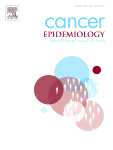
Publication date: August 2017
Source:Cancer Epidemiology, Volume 49
Author(s): Rikke Rass Winkel, My von Euler-Chelpin, Elsebeth Lynge, Pengfei Diao, Martin Lillholm, Michiel Kallenberg, Julie Lyng Forman, Michael Bachmann Nielsen, Wei Yao Uldall, Mads Nielsen, Ilse Vejborg
BackgroundThe long-term risk of breast cancer is increased in women with false-positive (FP) mammography screening results. We investigated whether mammographic morphology and/or density can be used to stratify these women according to their risk of future breast cancerMethodsWe undertook a case-control study nested in the population-based screening programme in Copenhagen, Denmark. We included 288 cases and 288 controls based on a cohort of 4743 women with at least one FP-test result in 1991–2005 who were followed up until 17 April 2008. Film-based mammograms were assessed using the Breast Imaging-Reporting and Data System (BI-RADS) density classification, the Tabár classification, and two automated techniques quantifying percentage mammographic density (PMD) and mammographic texture (MTR), respectively. The association with breast cancer was estimated using binary logistic regression calculating Odds Ratios (ORs) and the area under the receiver operating characteristic (ROC) curves (AUCs) adjusted for birth year and age and invitation round at the FP-screenResultsSignificantly increased ORs were seen for BI-RADS D(density)2-D4 (OR 1.94; 1.30-2.91, 2.36; 1.51-3.70 and 4.01; 1.67-9.62, respectively), Tabár's P(pattern)IV (OR 1.83; 1.16-2.89), PMD Q(quartile)2-Q4 (OR 1.71; 1.02-2.88, 1.97; 1.16-3.35 and 2.43; 1.41-4.19, respectively) and MTR Q4 (1.97; 1.12-3.46) using the lowest/fattiest category as referenceConclusionAll four methods, capturing either mammographic morphology or density, could segregate women with FP-screening results according to their risk of future breast cancer − using already available screening mammograms. Our findings need validation on digital mammograms, but may inform potential future risk stratification and tailored screening strategies
from Cancer via ola Kala on Inoreader http://ift.tt/2qnTnxp
via
IFTTT
